On August 16, 1898, DeLisle Stewart, an employee of the Arequipa Observatory, took a photograph of Saturn. Unbeknownst to him, this image captured an unknown moon of the planet, which would later be named Phoebe. Commemorating the 125th anniversary of this event, we are pleased to offer you some details about this celestial body, which is one of Saturn’s most unusual moons.
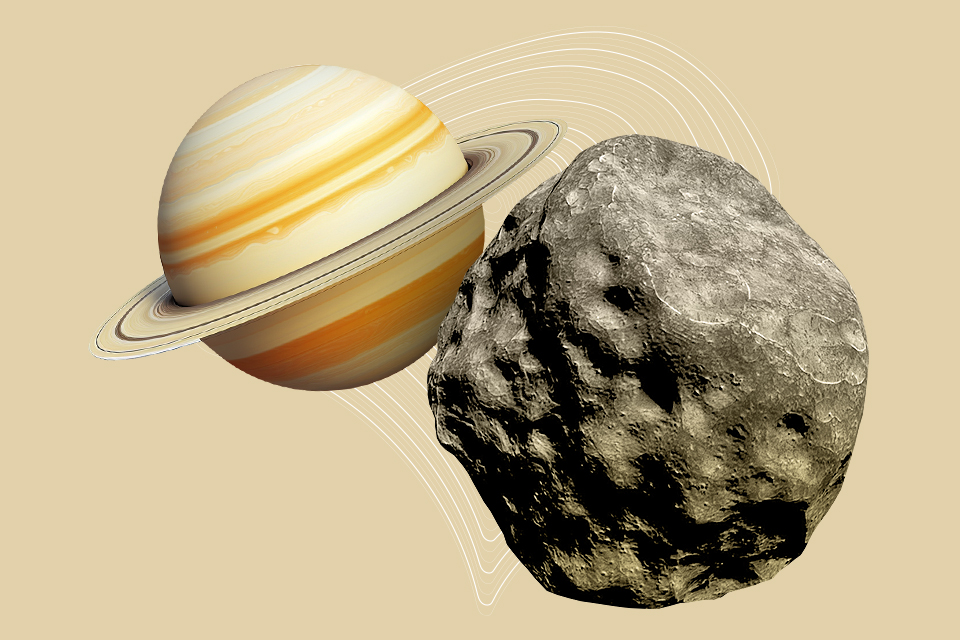
Historical Discovery on Photographic Plates
Phoebe was first photographed on August 16, 1898. However, its official discovery occurred on March 17, 1899, when astronomer William Pickering studied the photographs and noticed an object whose position did not match any of the eight known moons of Saturn at that time.
Upon further observation, Pickering confirmed that this was not a defect on the photographic plate; thus, it was indeed an unknown companion of the gas giant. This marked the first time in the history of astronomy that a planet’s moon was discovered through photography.
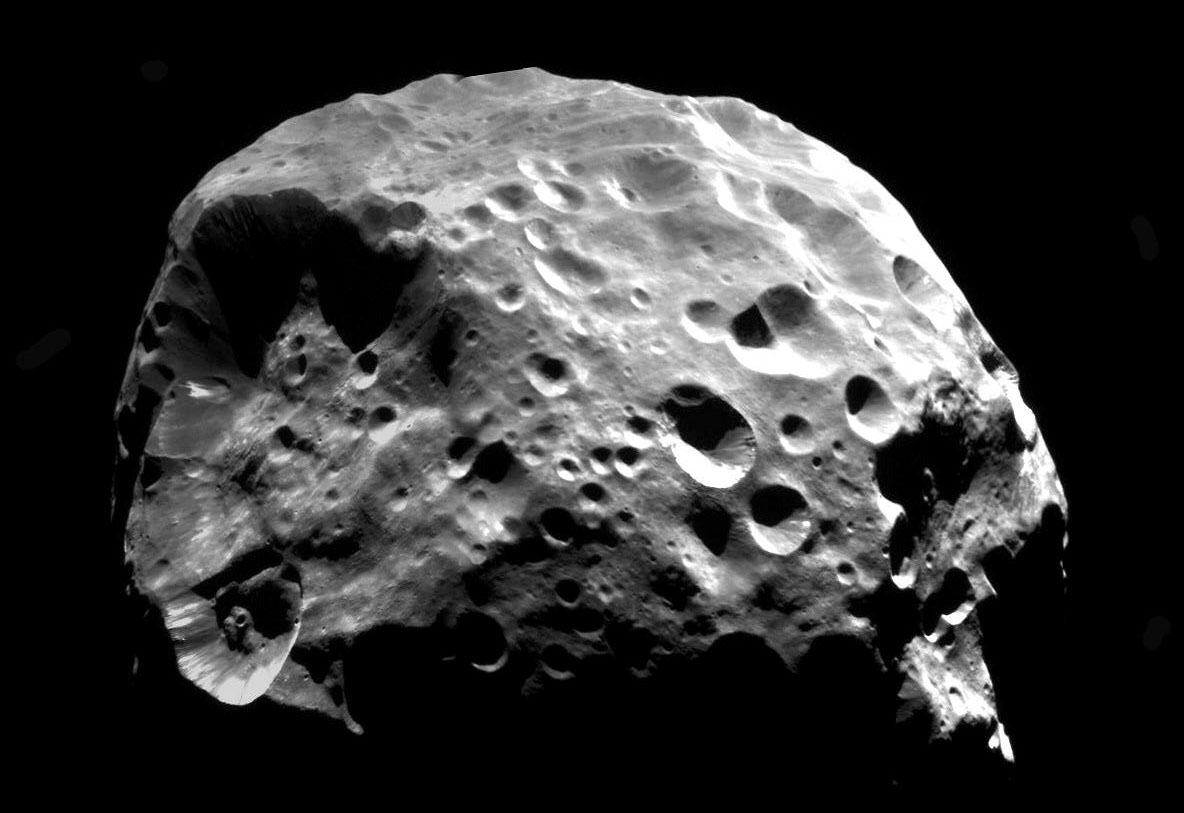
This newly discovered body was named Phoebe, after the daughter of Uranus and Gaia from ancient Greek mythology. Its average diameter is 213 km, making it the ninth-largest moon of Saturn. According to historical tradition, it is sometimes referred to as Saturn IX.
The Enigma of Phoebe’s Origin
By studying Phoebe’s orbital parameters, astronomers quickly realized that it significantly differed from Saturn’s other moons. The reason is that Phoebe orbits in a retrograde direction, which means it moves in the opposite direction to the planet’s rotation on its axis. This can only mean one thing: Phoebe did not form alongside Saturn but was captured by its gravity at some point.
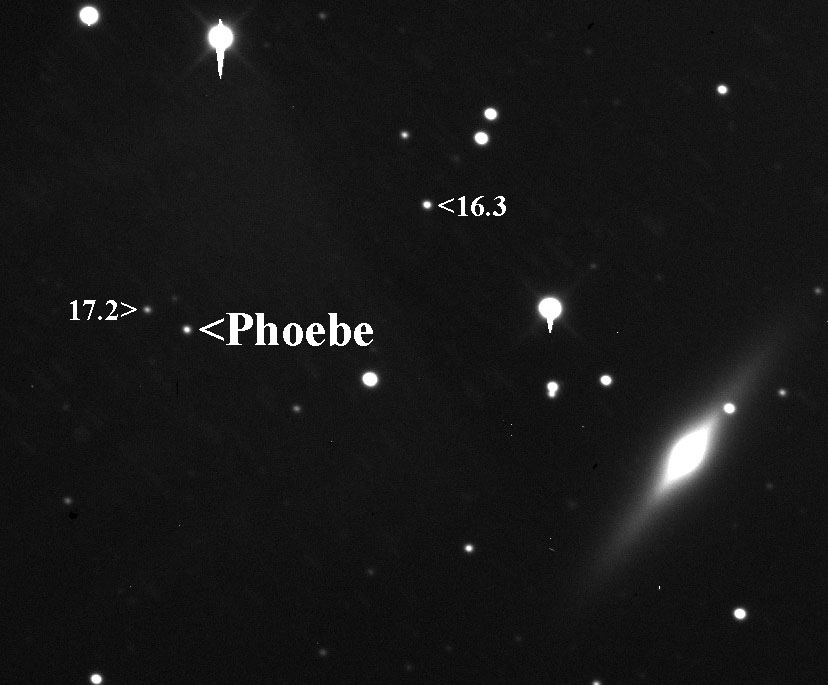
But that’s not all. Phoebe’s orbit extends at a significant distance from Saturn. The average distance between them is 13 million km, which is about 33 times greater than the distance between the Earth and the Moon. Only in 2000 was a small moon located even farther from Saturn discovered.
For obvious reasons, astronomers could not discern details on Phoebe’s surface using ground-based telescopes. However, they managed to determine that it was very dark. This starkly contrasted with Saturn’s icy moons, which have high albedo. As a result, for a long time, the prevailing view in the scientific community was that Phoebe was an asteroid captured by the gravity of the gas giant. This perspective persisted until a visitor from Earth arrived there.
Meeting Cassini
From 1979 to 1981, three spacecraft visited the vicinity of Saturn. Unfortunately, their trajectories took them at a considerable distance from Phoebe. Voyager 2 came closest to it. In September 1981, it captured images from a distance of 2.2 million km. However, this was still too far to provide substantial information about the moon.
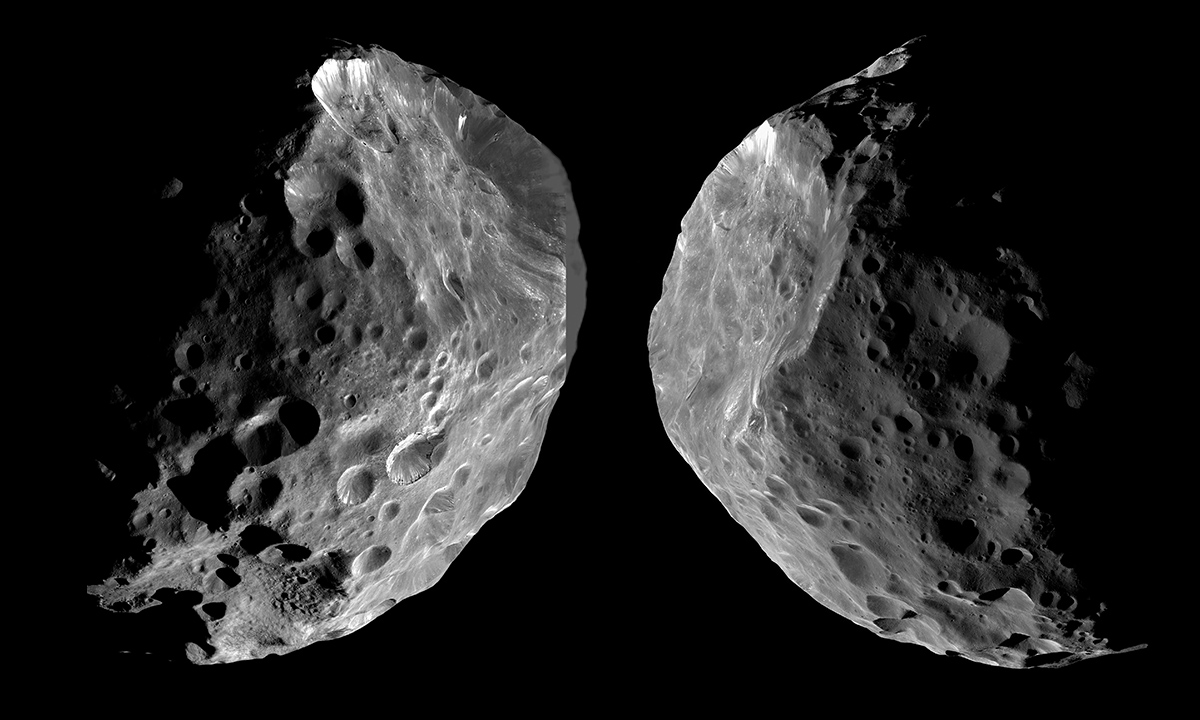
The opportunity to closely observe Phoebe first arose in June 2004, when the Cassini spacecraft arrived at Saturn. Its trajectory was specially designed to approach the moon. This was essentially the only chance to get closer to it. Due to its extraordinary distance from the planet, the automatic probe wouldn’t have been able to approach Phoebe again.
Fortunately, the rendezvous with the moon went smoothly. Cassini flew within 2068 km of its surface, transmitting a series of high-quality images.
Object from the Kuiper Belt
Those images astonished astronomers. Despite Phoebe’s genuinely dark surface, a series of its craters revealed that a layer of deposits only a few hundred meters thick was responsible for this darkness, beneath which lay massive ice deposits. Additionally, Cassini managed to detect a large amount of carbon dioxide gas on the moon, a feature not observed on any asteroid.
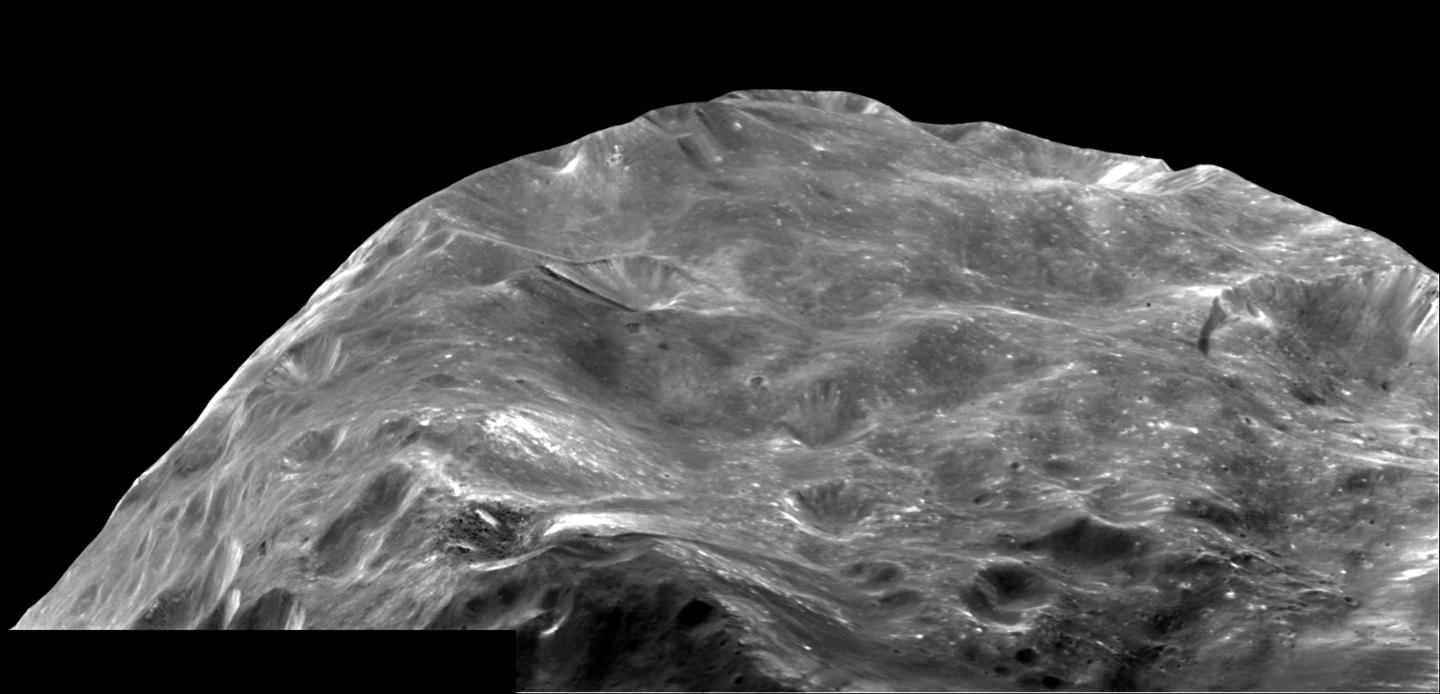
Phoebe’s Surface. Source: NASA/JPL/Space Science Institute
Based on this, astronomers concluded that Phoebe is, in fact, a captured Saturnian centaur — one of the icy objects that orbit between Jupiter and Neptune. These bodies originally formed in the Kuiper Belt and later transitioned to orbits closer to the Sun.
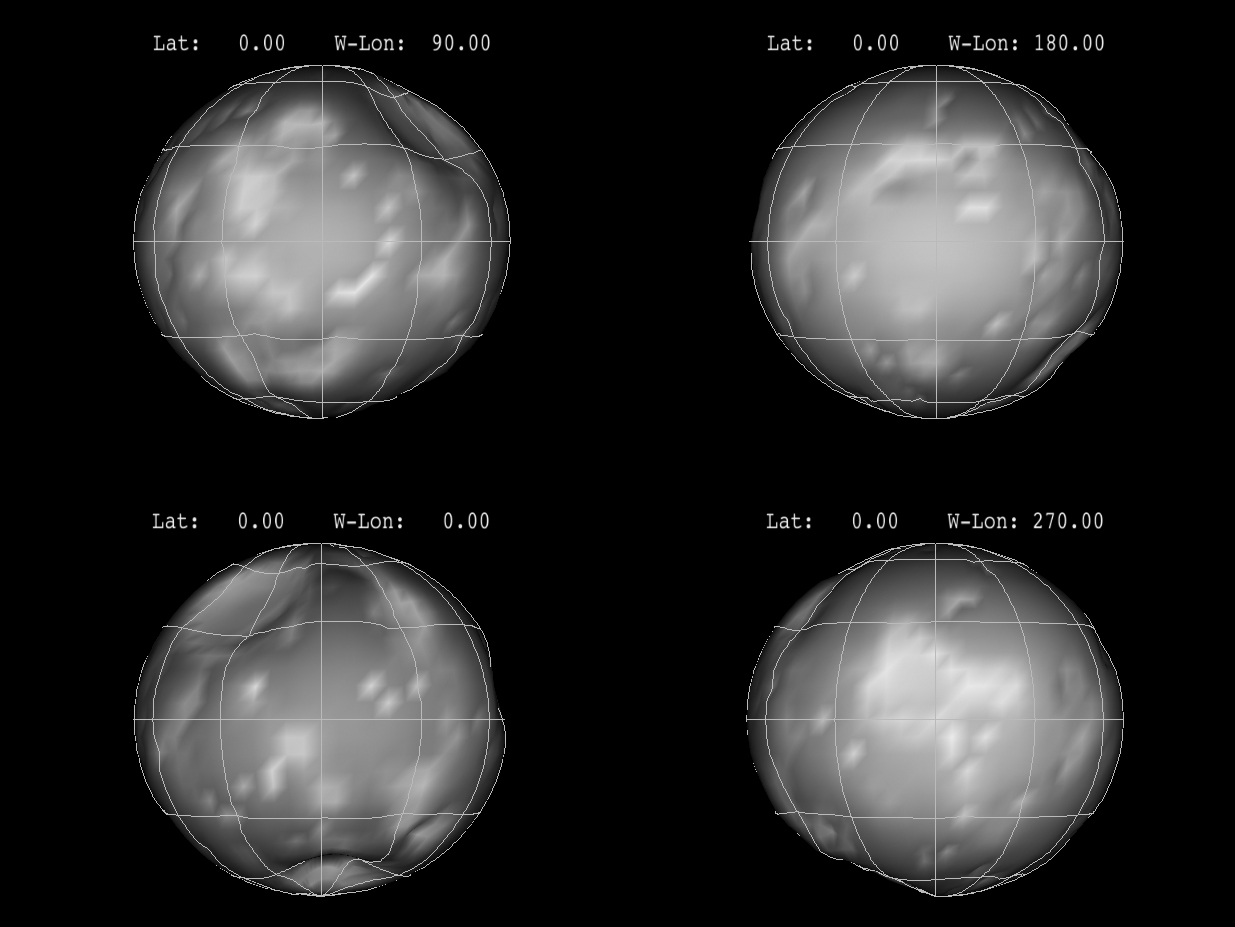
Phoebe also has quite a distinctive shape. Initially spherical, subsequent collisions with asteroids and comets roughened its surface. According to scientists, shortly after its formation, the body contained enough radioactive materials for gravitational differentiation to begin after acquiring its spherical shape. Heavier rocks moved to the central part, forming the moon’s core, while lighter ones remained on top, creating the mantle. There was so much heat that in the first million years of its existence, Phoebe’s surface was covered with liquid water.
Source of Saturn’s Ring
Surprises from Phoebe didn’t end there. In 2009, when the Spitzer infrared telescope imaged Saturn, it discovered a previously unknown ring that extends from 3 to 15 million km from the planet. It’s very faint and consists of tiny dust particles.
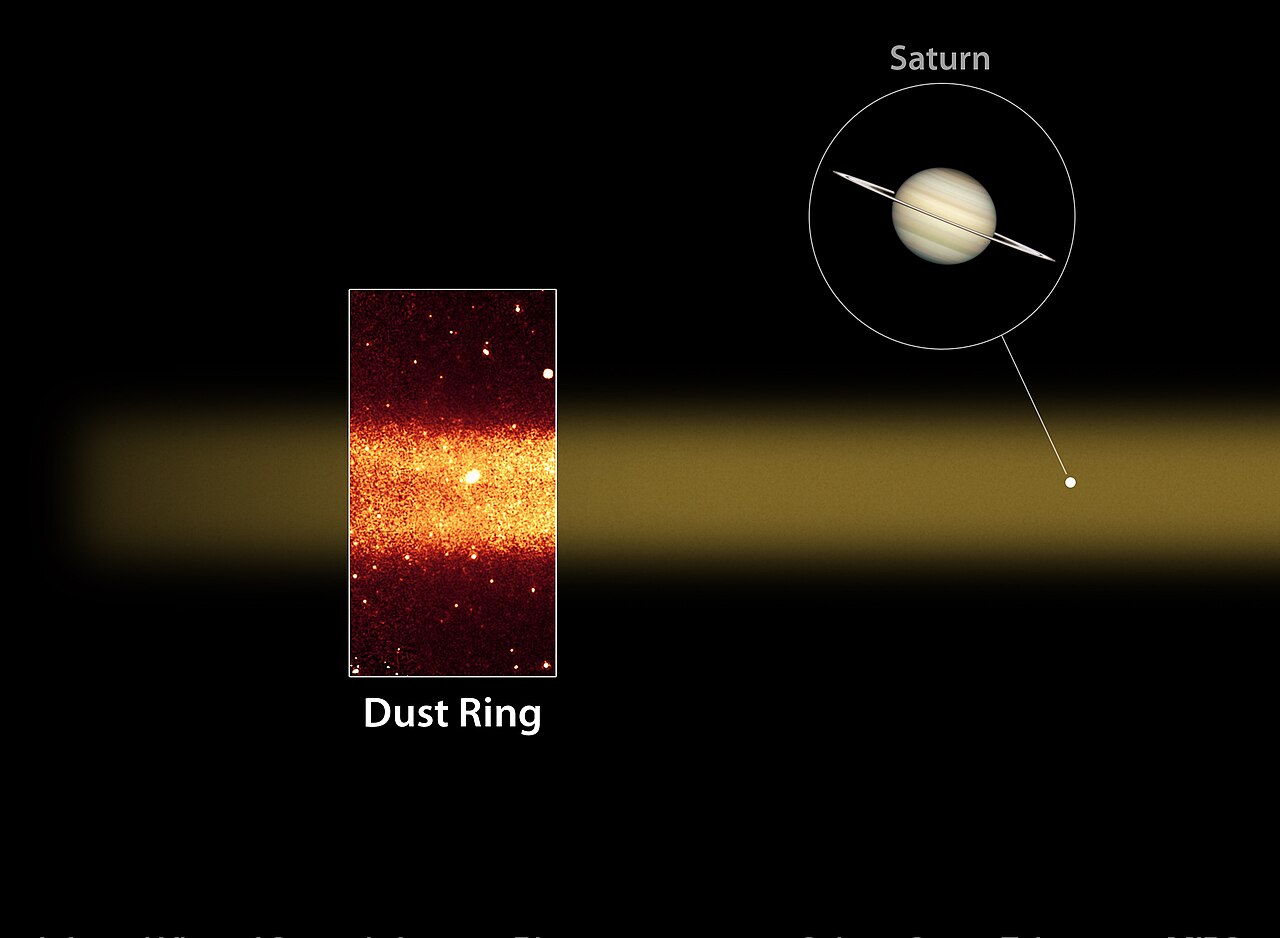
Since the orbital characteristics of the ring match Phoebe’s orbit, scientists believe that it is its source. The ring formed from dust ejected from its surface by micro-meteorite impacts. Part of this dust likely then settles on another Saturnian moon, Hyperion. Such a mechanism could explain the distinctive dark spots on Hyperion’s surface.
Future Studies of Phoebe
For now Cassini is the only device that has approached Phoebe ever. But it’s conceivable that in the future, other earthly emissaries will visit it. Considering the moon’s origin, studying it provides a unique opportunity to glimpse into the Kuiper Belt without the need to send a mission that would fly much longer and be far more expensive than sending a probe to Saturn. So, if scientists are presented with such an opportunity again, they are unlikely to decline it.
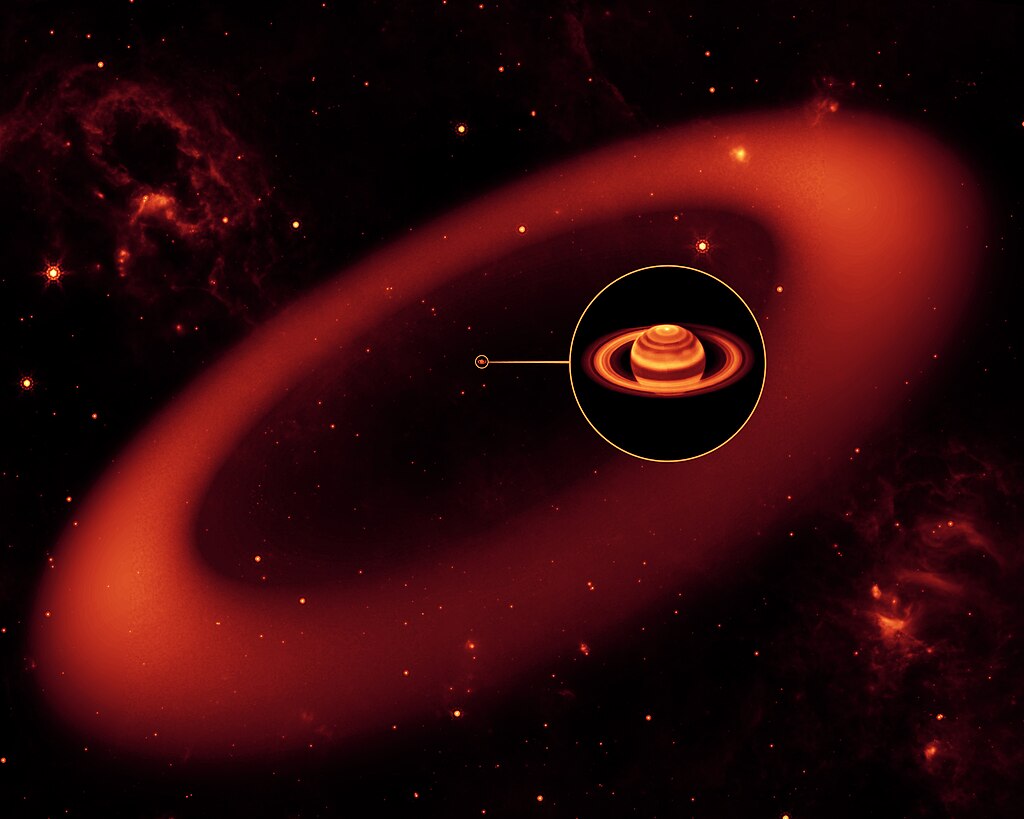
In conclusion, it’s worth noting that Phoebe also played a significant role in the Expanse book series, which was later adapted into a TV series of the same name. According to the plot, Phoebe isn’t a natural body but a constructed object by an extraterrestrial civilization, launched billions of years ago into the Solar System towards Earth. However, Saturn’s gravity captured it, turning it into its moon.
Of course, this is just the plot of a science fiction book. But considering how many times Phoebe has already surprised scientists, one cannot rule out that it might indeed be hiding yet-to-be-deciphered secrets.
